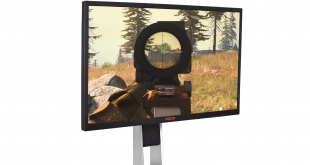
While the lastest graphics cards are capable of pushing high frame rates at 4K resolution, Steam's Hardware Survey still shows that the vast majority of gamers use 1080p displays. So if most aren't increasing the resolution of their monitor, what about the refresh rate? That's where this AOC AG251FZ2E comes in. Sporting a 24.5inch TN panel, this display offers a 240Hz refresh rate and a claimed 0.5ms MPRT. Priced at just over £300 here in the UK, is this display worth buying?
While we are now starting to see 360Hz displays from the likes of ASUS, Alienware, Acer and MSI, opting for a 240Hz panel is still going to offer a smoother experience over a 60Hz or even 144Hz display. The high pricing of those 360Hz screens is also going to be a factor as to why you may want a 240Hz model, too, as the AOC AG251FZ2E comes in at £309 here in the UK, less than half the price the ASUS ROG PG259QN.
This screen also comes equipped with FreeSync Premium, and while it isn't on Nvidia's official list of G-Sync compatible panel, I had no problems using G-Sync during my testing. On top of that, a rated typical brightness of 400 nits is decent, while AOC also claims 102% sRGB coverage. Let's see just how good this screen really is.
Specification
- Monitor colour: Black/Red
- Screen size (inch): 24.5 inch
- Resolution: 1920×1080
- Refresh rate: 240Hz
- Response Time (MPRT): 0.5 ms
- Panel Type: TN
- Sync Range: 48 – 240
- Sync Technology: FreeSync Premium
- Backlight: WLED
- sRGB Coverage (%): 102
- Aspect ratio: 16:9
- Brightness (typical): 400
- Contrast (dynamic): 80M:1
- Contrast (static): 1000:1
- Pixel Pitch: 0.31125
- Active Screen Area (HxW): 543.744 (H) mm x 302.616 (V) mm
- Viewing angle (CR10): 170/160 º
- Display Colours: 16.7 Million
- Bezel Type: Narrow
 KitGuru KitGuru.net – Tech News | Hardware News | Hardware Reviews | IOS | Mobile | Gaming | Graphics Cards
KitGuru KitGuru.net – Tech News | Hardware News | Hardware Reviews | IOS | Mobile | Gaming | Graphics Cards


